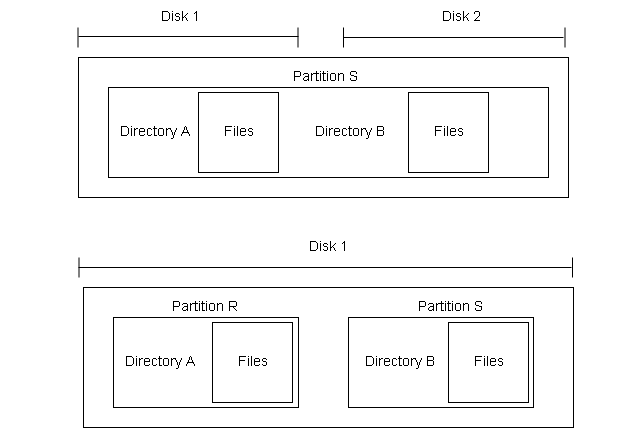Files are stored on random-access storage devices including hard disks, optical disks, and solid-state disks. The storage device can entirely be used as a file system or divided into many partitions. Each partition may or may not have a different file system.
Storage devices are collected into RAID sets, that provides high availability and fault tolerance in case a disk fails. The partitions can also be used to create RAID sets.
Swap Space
The partitions are known as slices or mini disks. Sometimes partitions are left without any file system on them for other purposes such as swap space. Every partition should have a file system installed and such a partition is called volume.

They are virtual disks that contain information about the file system in a device directory or volume table of contents. It contains information about name, size, location, and type of all the files in the volume. The volume can contain more than one operating systems that can run concurrently.
File System of Solaris
The computer system has storage devices that may have 0 or more file systems. Each file system may be different where some are general purpose and some special file systems. Here is a list of general-purpose file system used in Solaris.
tmpfs – temporary file system
objfs – virtual file which is interface to kernel that look like a file system and gives debuggers access to kernel
symbols.
ctfs – a virtual file system to maintain “contract” information to manage which process start when the system boots
and continue to run.
lofs – “loop back file system ” allows one file system to be accesses in place of another one.
procfs – a virtual file system that provide information on all processes as file system.
ufs, zfs – general-purpose file system
Directory Structure Overview
When we create a file within a directory and entry for the file is made to the directory. The directory can be
organized in may ways. Here is a list of operations performed on a directory.
Create a file – a new file is created and added to the directory.
Delete a file – an existing file and its entry is deleted from the directory.
List a directory – display the all files inside directory and directory entries for each of these files.
Rename a file – A user with proper permission can rename a file. It will change the position of the file in the
directory.
Traverse the file system – Certain situation demands to traverse the file system – visiting every directory and file in the file system such as taking a backup at regular interval. The backup copy of the file system is stored in a magnetic disk or hard drive.
References
- Abraham Silberschatz, Peter B. Galvin, Greg Gagne (July 29, 2008) Operating System Concepts, 8 edn., : Wiley.